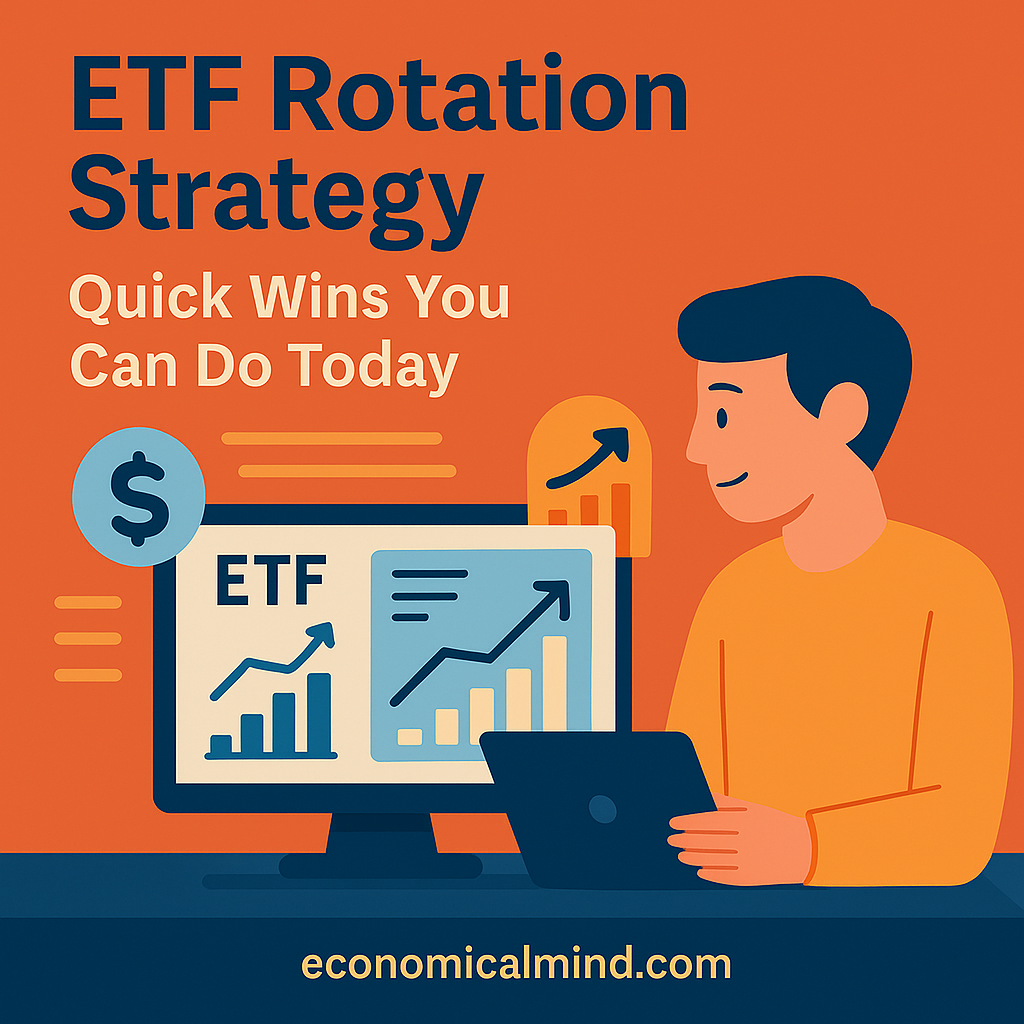
When it comes to smart investing, timing and diversification matter. The ETF rotation strategy is a method used by investors who want to stay flexible — shifting between exchange-traded funds (ETFs) to capture stronger market trends while minimizing exposure to underperforming sectors.
If you’ve ever wondered how to make your portfolio more dynamic without day trading, this strategy might be the perfect middle ground.
What Is ETF Rotation?
ETF rotation involves periodically moving your investments between different ETFs based on performance, momentum, or economic outlook. Instead of holding a static portfolio, you “rotate” money into funds showing stronger potential and away from lagging ones.
For example, if technology ETFs are outperforming utilities this quarter, a rotation investor might sell some utilities and allocate more toward tech — then reassess next month or quarter.
Quick Wins to Get Started
You don’t need to be a Wall Street pro to apply ETF rotation effectively. Here are a few fast, practical ways to get started today.
1. Focus on Major Asset Classes
Start simple by rotating between broad ETFs such as:
- SPY (S&P 500) – Large-cap U.S. stocks
- QQQ (Nasdaq 100) – Tech-focused growth stocks
- IEF or TLT – Treasury bonds
- GLD – Gold and commodities
Quick win: Rotate monthly or quarterly based on performance over the past 3–6 months — staying in the top one or two performers.
2. Use Momentum as a Guide
Momentum-based ETF rotation uses past returns to predict short-term future trends.
Quick win: Use a free tool like ETFReplay or Portfolio Visualizer to backtest a simple 3-ETF momentum rotation strategy and see which funds lead over time.
3. Diversify by Sector and Theme
You don’t need to rotate only between broad market ETFs. Some investors rotate across sectors like energy, healthcare, and technology — or by global regions.
Quick win: Track sector leaders using ETFs like XLK (Tech), XLE (Energy), and XLV (Healthcare). Move into the top one or two each quarter.
4. Automate Rebalancing with Apps
Automation can save time and emotion-driven mistakes.
- M1 Finance and Fidelity Go allow flexible ETF allocation and scheduled rebalancing.
- Seeking Alpha Premium offers ETF performance screeners to help identify momentum.
Quick win: Set a quarterly reminder to review performance and rebalance automatically if your platform allows it.
Mistakes to Avoid
ETF rotation isn’t foolproof — and timing too aggressively can hurt returns. Watch out for these common errors:
- Overtrading: Switching too often can increase taxes and fees.
- Ignoring risk: Some sectors swing more wildly than others.
- Short-term panic: Rotation is strategic, not reactive.
Quick win: Set clear rules — like reviewing every 90 days — and stick to them regardless of short-term market noise.
Long-Term Benefits
When done right, ETF rotation helps investors:
- Capture market momentum during strong trends
- Reduce exposure to underperforming sectors
- Maintain flexibility while still investing passively
Over time, this can improve risk-adjusted returns compared to static “buy and hold” portfolios.
Tools and Resources
Here are a few helpful tools to refine your rotation approach:
- Portfolio Visualizer – Free backtesting for ETF rotation models.
- ETFDB.com – Compare ETF performance and sectors easily.
- TradingView – Track momentum indicators visually with charts.
The Bottom Line
ETF rotation is a flexible, data-driven way to stay proactive in your investments without becoming a day trader. Start small, test your strategy, and keep your rotation schedule consistent.
Quick win for today: Pick three ETFs across major asset classes, track their 3-month performance, and note the leader — you’ve just taken the first step toward smarter ETF investing.
